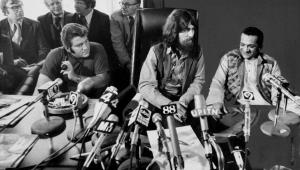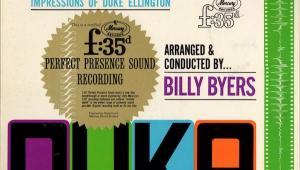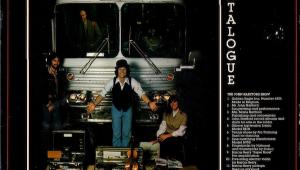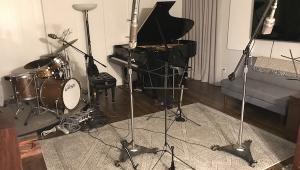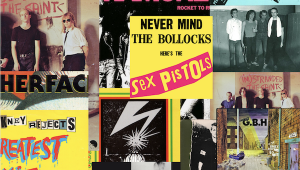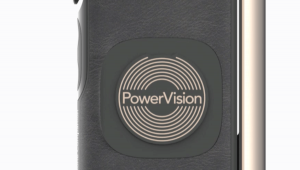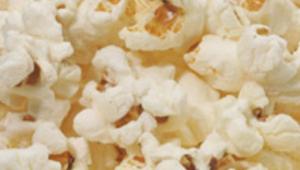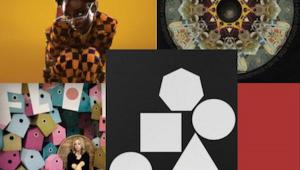Got Live If You Want It! Part 3
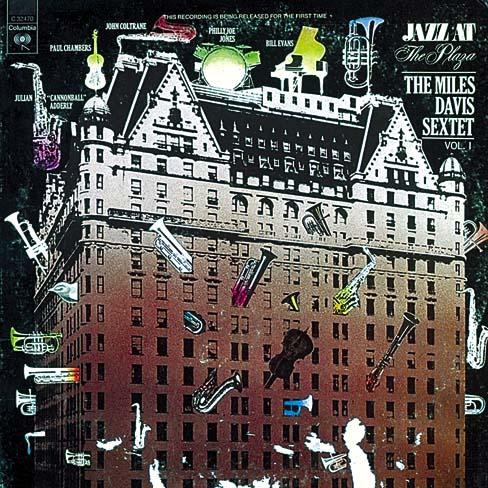
BOB MARLEY AND THE WAILERS
Live!
Produced by Steve Smith and Chris Blackwell
Engineered by Steve Smith
Mixed by Phill Brown
Island/Tuff Gong ILPS 9376 (LP), 422-846 203-2 (CD)
Music:11
Sound:8
Before Bob Marley cut Live! at the Lyceum in London, Marley's producer Chris Blackwell remembers how the fanaticism surrounding the singer was escalating. “At his shows he was doing 'No Woman, No Cry' and the audiences were singing so enthusiastically. I thought, 'Boy, I've got to record this live', because it sounded so incredible.”
A few months later, Marley recorded the album, and his life in music, moving quickly from R&B enthusiast and activist to pop superstar and universal ambassador of reggae music, would never be the same. “1975 was the defining point of his career,” says Blackwell, “because Bob broke out of Jamaica and England and the whole world began to listen.”
Live! is potently concise, from the opener “Trenchtown Rock” to the closing “Get Up, Stand Up.” “There is always an energy that goes to a band when they walk onstage,” says Blackwell, “and if the mood is right the performer can harness that energy and take off. That night Bob Marley was at the center of the world.”
Though Blackwell produced Live!, he insists he had no hand in recording it. Rather, he stood in the audience and watched as Marley's career crystallized. “It was one of those shows - even though it was a capacity of 1800, in which 20,000 people were there. The word spread so much the next day, with everybody going on as if they were there. It was just one of those magic times."
- Bob Gulla
BOB MARLEY AND THE WAILERS
Talkin' Blues
Produced by Chris Blackwell & Hooman Majd
Engineered by Trevor Wyatt
No mastering credit
Island Records 422-848 243-2 (CD)
Music: 11
Sound: 8
My introduction to this extraordinary man and his band of musicians came shortly after my arrival in the U.S., where I was to attend college in the illustrious state that is Maine. I exaggerate somewhat, of course, as Maine's long winters were anything but illustrious for cold-hating me, and the isolation of Lewiston - an ex-industrial shithole - only compounded my unhappiness further.
So it was in a place called the "Red Room," the living room of a triple in which lived a couple of cheery stoners, that I first really heard Bob Marley. Talkin' Blues, a compilation album released in 1991, was in constant rotation, along with Santana and The Dead, and so much so that I found myself eventually being able to decipher some of Bob's Jamaican patois during the interview extracts. It takes a great deal of dope and time to be able to do this.…
I digress. While dope is usually never very far from the grooves and digits of Bob albums the world 'round, the music's weight, the lyrics' power, and the incessant drive of reggae require no "artificial flavoring" in order to be appreciated. I believe I was spoiled when my introduction to reggae came in the guise of this album.
While not strictly a "live" album in the conventional sense of the word, all but four of the tracks were recorded in front of five or six people in a closed studio session at the Record Plant in Sausalito in 1973. This remarkable session was broadcast live by San Francisco's KSAN-FM at the very end of The Wailers' tribulation-laden first American tour. The remaining tracks include a live 1975 version of "I Shot the Sheriff," recorded at the Lyceum Ballroom in London; alternate versions of "Talkin' Blues" and "Bend Down Low," from the Natty Dread album; and finally, a previously unreleased "Am-A-Do."
Originally slated to play as the warm-up act for Sly & The Family Stone, Sly dumped The Wailers after just four shows, complaining that they were just too damn impressive, making them a hard act to follow! The band's spirits were soon revived when they managed to find their way to a two-night sellout gig at the Matrix club in San Francisco. From there, Bob, Peter Tosh, Earl "Lindo" Wire, Aston "Familyman" Barrett, Carlton "Carly" Barrett, and Joe Higgs - who had taught Bunny Wailer, Peter, and Bob harmony techniques and breath control - moved on to their very last engagement at the Record Plant studio.
In my humble opinion, that session yielded the very best Bob Marley & The Wailers could offer. Caught on the cusp of the band's explosion onto the international music scene, The Wailers had honed themselves into a cohesive whole that managed to retain the "roughness," what could maybe be qualified as the "lazy" sound, so inherent and unique to reggae. One has to remember that this sort of rhythmic incarnation, bass anchored to the drum's one-drop as the chicka-chicka of the rhythm guitar punctuated the air overhead, had never been heard outside of Jamaica. Its impact was to be dramatic, and its legacy infinite on the world beyond the island of "sufferahs."
"Militant style," a catchphrase used to describe the revolutionary style of Rastas along with the reggae genre that was to bring them into the international limelight, is the most concise description I can give to this hard-hitting compilation. To my ears, the early bounce and playful nature of ska had passed through the rough, early incarnations that were known as reggae, to finally give way to the somber maturity and razor-edge that was now The Wailers' proprietary sound. This was their moment of glory; their moment to preach from the musical pulpit to all who would listen. And listen they did, in their millions.
The band's musical harmony was even more astounding given the many changes that were taking place among its original members: following a misunderstanding with Chris Blackwell (and underlined by his attachment to Jamaican soil), Bunny Wailer refused to tour with the band in the U.S., leading to his replacement on the tour by Joe Higgs; Peter Tosh, meanwhile, was growing more and more bitter about Bob's place in the spotlight and his inability to come to an accommodation with Blackwell about his cut of the financial pie.
It was against this backdrop of simmering upheaval that The Wailers stepped up and delivered the awesome tunes that made up Talkin' Blues. While the title track, "Talkin' Blues," eases you straight into the album without a fuss, it is followed by the utterly savage "Burnin' & Lootin'," which begins the boil that is heightened by subsequent tracks like "Get Up Stand Up" and my personal favorite, "Slave Driver." Tosh's proud voice leads the prophetic "You Can't Blame The Youth," while the harmonies of "Rastaman Chant" are nothing if not spiritual in nature.
As the Barrett brothers function as the band's link to the earth, Bob and Peter guide them through the fire of their unique voices to arrive at the ethereal plane upon which floats Joe Higgs' percussion and the sheer magic of Earl Lindo's keyboards. All of these elements provided the musical landscape upon which were impressed themes of social injustice, and political inequality The Wailers sought to address. But it was never all about fire and brimstone, and songs like "Bend Down Low" and "Kinky Reggae" speak to the more simple pleasures of life.
The are only two other performances of The Wailers that I think equal the majesty of this compilation: one is a filmed studio performance from one of the current videos about the band, and which includes "Bad Card" and "Revolution," and the second is a bootleg available on CD which includes an unforgettable nine-minute version of "Natty Dread."
The inclusion on Talkin' Blues of the excerpts of a radio interview Bob did in Jamaica in 1975, shortly after the death of Ethiopia's Haile Selassie, provide a rare glimpse into the mind of this musician. As he speaks of his worries, fears, and how Jah still lives, we are served with as intimate a portrait as we shall ever receive into the greatest reggae artists and group that ever walked the planet.
- Eric R. Drosin
FLEETWOOD MAC
Fleetwood Mac Live
Produced by Richard Dashut, Ken Caillat, and Fleetwood Mac
Engineered by Ken Caillat and Biff Dawes
Mixed by Ken Caillat and Richard Dashut
Mastered by Ken Perry for Soundstream Inc. (LP cutting by Capitol Records/West Coast, Bob Ludwig at Masterdisk/East Coast)
Warner Bros. 2WB 3500 (2 LP) / 3500-2 (2 CD)
Music: 11
Sound: 8
When Lindsey Buckingham and Stevie Nicks joined Fleetwood Mac in 1975 they took on a lot, not the least of which was fronting an established band known for its live performances and extensive touring. I haven't been able to dig up any live material from the tours that followed Fleetwood Mac and Rumours, but it's probably just as well that the band let itself congeal for a few years before releasing any live material of its "new" lineup.
Whatever the factors leading up to it, Fleetwood Mac Live, a record of the Tusk tour from October '79 to September 1980, showcases the group in all its glory, not merely rattling off its powerful catalog of hits (though the 18-song collection is chock full of those), but flexing its muscles as a band - five ace musicians playing with passion and cohesion. The amazing thing about this record isn't that Buckingham, Nicks, and Christine McVie can actually hit the notes in concert - it's that they so often rearrange the material and play with people's expectations, making it interesting for themselves as well as for their audience, and in many cases surpassing the quality of their studio work (several of the live versions from this set were chosen over their studio counterparts for 1992's four-CD box set, The Chain).
Nowhere is the live/studio difference so dramatic as with Buckingham's singing and guitar playing. If Tusk is a tribute to his increasing willingness to experiment with odd textures and strange moods, then Fleetwood Mac Live is Buckingham's testament to the bottom line: being down to earth and playing it straight, but with equal passion and no-holds-barred conviction.
An extended, suspenseful introduction to "Monday Morning" kicks off the set, which settles quickly into McVie's "Say You Love Me" and a mellow "Dreams" (recorded at a Paris sound check); from there Buckingham has a go at Peter Green's "Oh Well" and all but betters the original (this version is far more dynamic, a crucial factor for this song).
Side Two of the LP has always been my favorite. It opens with the version of Nicks' "Sara" - haunting, mesmeric, and, at 6:47, the longest version of the piece; next is Buckingham's tortured ode to sexual frustration, "Not That Funny," which, in concert, nearly tripled in length (think of the implications there!) and became a centerpiece for Buckingham and drummer Mick Fleetwood's extended riffing; the side winds down with an especially raw and nuanced performance of Rumours' "Never Going Back Again" and goes out with Nicks' tearful "Landslide," which, pardon the metaphor, buries her more recent recording (from 1997's The Dance).
The extent of Buckingham's abilities on the guitar was never, to my mind, apparent on Fleetwood Mac's studio recordings, but his work on this album places him quite nearly in league with Pink Floyd's David Gilmour for sheer fretted firepower and dramatic intensity. Everywhere, he's bursting at the seams - "Not That Funny," "Rhiannon," "Go Your Own Way," "Don't Stop." But it's the eight-and-a-half-minute "I'm So Afraid," originally from 1975's Fleetwood Mac, where he really gets cooking, and the new arrangement does beg the question: Is it more than coincidence that "Comfortably Numb" came out in the same month in which Fleetwood Mac recorded this version of "I'm So Afraid"?
The country-flavored "Don't Let Me Down Again," which sounds lackluster and misguided on the pre-Fleetwood Mac Buckingham/Nicks LP, finally gets its due here, and the album closes with Brian Wilson's tender "Farmer's Daughter," with gorgeous harmonies all around.
In my opinion, the Buckingham/Nicks-era Fleetwood Mac albums are among the best-sounding pop recordings ever made, and it's surely no accident that the band's studio team showed up to handle production on its live album. And only one thing keeps this from being a great concert recording: a hardness and glassiness that finds its way onto both the LP and CD. I attribute these characteristics not so much to the fact that the album was digitally mixed and mastered as to the fact that it was produced this way in 1980! The mixing itself, which took place at George Massenburg Studios, is very good - I just don't think there's any escaping the side effects of early digital converters.
For its own part, the LP (even here!) has more depth and "air" (especially on voices and Buckingham's guitar) than the CD, with a deeper and less thuddy low end as well. The pressing I have is late enough that the disk doesn't specify whether it was cut in L.A. or New York; I would have loved to compare the bi-coastal cutting experiment! But until Warners remasters the CD, the LP - any of the LPs, I'd wager - is the way to go.
Fleetwood Mac Live captures a world-class band at the peak of its powers and the apex of its career and will forever stand in the way of anyone's claims that Buckingham's Mac was nothing but a well-polished hit-producing machine.
- Michael Mikesell
JAMES TAYLOR
(Live)
Produced by Don Grolnick & George Massenburg
Engineered by Nathaniel Kunkel with John Godenzi, Randy Hutson, and Michael White
Mixed by George Massenburg
Mastered by Doug Sax and Gavin Lurssen at the Mastering Lab
Columbia C2K 47056 (2 CD)
Music 11
Sound 8
Originality may not be the first characteristic that jumps to mind when one thinks of James Taylor, but consider this: what other world-famous pop star plowed more than a quarter-century into his or her recording career before releasing a live album? That Taylor did this seems even stranger considering his longstanding reputation as an exemplary live performer.
Luckily for him (and for us), 26 years wasn't 10 years too long to wait - even today, five years after the release of (Live), Taylor's dry, velvety tenor sounds astoundingly close to the way it did on his 1967 debut, James Taylor and the Original Flying Machine. What we get on this collection is 30 great songs (the bulk of them classics) rendered with spirit and polish by Taylor and a customarily stellar backing band, which includes Valerie Carter on vocals, Michael Landau on guitar, the bassist Jimmy Johnson, the drummer Carlos Vega, and Don Grolnick co-producing and playing piano. (Sadly, both Vega and Grolnick have died since this recording.)
Everyone is in top form throughout the album, and the band spins from sensitive folk ("The Secret O' Life," "Walking Man") to country ("She Thinks I Still Care," the rockier "Slap Leather") to blistering, gospel-tinged rock ("Shed a Little Light," "Sun on the Moon") seemingly on a dime. Standout arrangements abound, though "Traffic Jam," "Country Road," "Steamroller Blues," and "Up On the Roof" work best for me, evenly showcasing the lively vocal quartet (headed by Carter) and the band's ensemble playing. Quite honestly, the only number here that doesn't do it for me is "Only One," from That's Why I'm Here (1985), which feels a little too pat (to say nothing of saccharine).
This is a great album on a philosophical level as well as a musical one, however. (Live) is two hour-long discs beautifully structured and edited to feel like sequential sets from the same evening (which, unlike Dire Straits' amazing Alchemy album from 1984, it isn't). The first disc opens with an understated greeting, charges through a trove of hits ("Sweet Baby James," "Handy Man," "Your Smiling Face," and an entirely credible "Fire and Rain"), and closes with a promise to return soon; the second welcomes us back and carries through to appropriate end-of-the-night material, including "Carolina On My Mind," Carole King's "You've Got a Friend," and a haunting reading of 1981's a cappella "That Lonesome Road" (with no tape-speed alterations for this bass part!).
Drawing us the rest of the way into the concert hall, of course, is the production, which - though sibilant - is conceivably exactly as Massenburg & co. wanted it: crystal-clear, dynamic, and spacious - everything this music might have sounded in a medium-sized hall on a good night. (Just crank up "Steamroller Blues" for a demonstration in dynamics!) The recording was made digitally through Massenburg's own GML mic preamps with a Sony 3348 at stage-side to minimize cable runs. That explains the clarity….
Rumor has it* there's a DVD on its way featuring Taylor's two-hour-plus performance at New York's Beacon Theater last May. For possibly less than the price of the 2-CD set, this may indeed be a bargain. But whether the set list, the last-minute replacement drummer, and the expanded, horn-charted arrangements bear the same cohesion as those on (Live) remains to be seen (and heard).
- Michael Mikesell
*The DVD is currently available. Produced and engineered using Sony's latest and highest-resolution digital multi-track recorder by the analog enthusiast Frank Filipetti, the disc includes the entire concert, much of which was broadcast live over PBS on May 30th, 1998. The picture was recorded using digital video. Unfortunately, the concert will be presented in Dolby Digital AC-3 surround sound, though there's a possibility of a two-track, full-resolution PCM track as well. The Dolby Digital format uses highly compressed digital audio that “throws away” up to 90% of the data (that's not a typo!), which Dolby claims you can't hear anyway. Yeah, right. It's acceptable for film sound, but let's hope this does not become the future of recorded music. - Ed.
OTIS REDDING
In Person at the Whisky a Go Go
No producer credit
Engineered by Wally Heider
No mastering credit (LP)
Digitally remastered by Bill Inglot and Dan Hersch at Digiprep
Atco SD33-265 (LP)Sundazed 180g LP/Rhino R2 70380 (CD)
Music: 11
Sound: 10
It's no surprise that one of the greatest R&B performers of all time logged in with one of the greatest live recordings ever etched into vinyl. No one dared argue the point: Otis Redding simply inspired awe. Watching him, audiences couldn't stay still, couldn't take their eyes off him, couldn't help but feel the singer's adrenaline-rush of passion in their own hearts and souls. Capturing a performance of such visceral and abstract effect on disc, where visuals aren't a factor and the decibels don't sting your skull, is certainly impossible, but Redding's gig at L.A.'s Whisky a Go Go back in the spring of 1966 came as close as any to capturing the ardent intensity and sweaty passion of the Prince of R&B. He was just 25.
It didn't take Redding long to move out from under the tall shadow cast by Little Richard (who, by the way, inducted him into the Rock and Roll Hall of Fame in 1989). A major performance at the Monterey Pop Festival and a hard time on the West Coast club circuit helped expose him to wider (and whiter) audiences. His blend of raw talent and abundant energy - which melds beautifully with his band's same attributes here - shows up on scorching renditions of The Stones' “Satisfaction” and James Brown's “Papa's Got a Brand New Bag,” as well as his own “I'm Depending On You” and “Mr. Pitiful,” co-written with longtime guitarist Steve Cropper.
Redding died a year after this set was recorded (it was released posthumously in 1968), after having written and performed (but never witnessing) his first No. 1 hit, “(Sittin' On) The Dock of the Bay.” Redding died in 1967 when his chartered plane crashed into a Wisconsin Lake, also killing four members of his band.
- Bob Gulla
Ed. Note: Sundazed's 180g vinyl edition does a reasonably good job of capturing the original's sound, which was never anything special to begin with
JOHNNY THUNDERS AND THE HEARTBREAKERS
Live At Max's Kansas City '79
Produced by Peter Crowley and the Heartbreakers
Engineered by Paul Wickliffe and Paul Black
Mastered by Dave Crawford at Masterdisk
ROIR RUSCD8219 (CD)
Music: 10
Sound:7
Stephen D'Angelo and Mark Spinetti were sitting on the couch, drinking beer, and watching the Yankees on TV in Mark's basement apartment. It was a hot Friday afternoon in Queens, New York, and the two men seemed to have nothing better to do but get drunk and reminisce about the good old days when punks were punks. "Hey," said Stephen. "Remember when Johnny Thunders went out with your sister and you wanted to kick his ass?" Mark stared blankly at the ballgame; they were already clobbering the Royals and it was only the second inning. "Yeah, I remember," Mark said finally. "And when I caught up with the little scumbag he promised to get us into one of those New York Dolls gigs at the Mercer Arts Center. Good show, too; that was when Billy Murcia was still alive and playing the drums with them."
"Uh-huh," Stephen agreed. "I really thought those guys were going to hit the big time for awhile there. After Jerry Nolan replaced Billy they sounded even better, but dope broke that band up pronto." Mark walked over to the fridge and fished out two more beers; he could hear a soap opera blaring obscenely from the front room of his parents' house upstairs. "That's for sure," he sighed. "How about the time we saw Thunders at that used-record store in the East Village? He was selling off a whole stack of New York Dolls LPs for a dollar apiece. Nowadays those things probably go for 50 bucks!" Stephen took the beer from his friend and held the icy can against his forehead. He glanced over at the tube and noticed that Darryl Strawberry had just hit his 21st home run of the season.
"Johnny had founded The Heartbreakers by that time, hadn't he?" Stephen asked rhetorically. "As I recall, it was Thunders, Jerry Nolan, and Richard Hell from Television when they first started out. Man, what a bunch of fucking prima donnas. Hell didn't last too long before leaving to form the Voidoids, either. He was good, just not strong enough to hold his own with Thunders. Besides, the coolest thing they ever did together was steal 'Chinese Rocks' from Dee Dee Ramone." Mark laughed loudly. "That's true. Then they got Billy Rath on bass and added Walter Lure on guitar. They even did that Anarchy Tour over in Europe with the Sex Pistols, The Clash, and The Damned. Kicked punk ass on all those little Limeys too, from what I'm told. Thunders and Nolan were just way more experienced than those British kids at that point."
Mark's mother hollered downstairs that it was time for her son to pick up the dry cleaning from the Laundromat. "Later, Ma!" Mark yelled back. "It's a double header today and we're killing them - I'll go between games!" Somewhat embarrassed, Mark resumed his nostalgic rumpus with Stephen. "The Heartbreakers were great back then. But it was just like they sang it, 'Too Much Junkie Business,' know what I'm saying? The band couldn't keep it together for five minutes. After Jerry Nolan quit to form the Idols they just fell apart completely." Stephen shook his head in solemn agreement. The first game was over and the Yanks had put Kansas City away 8-2. "Yeah," he said. "Except for the farewell gigs they did a while later at Max's Kansas City, those shows might have been the best of them all."
Mark smiled at the mere mention of Max's Kansas City. "Man, I loved that place in the early '70s; even I was getting laid back then. You would always see Lou Reed or somebody else from the Warhol crowd or maybe Patti Smith. But you're right, those gigs at Max's in '79 were like magic. It didn't even matter that Nolan was gone. Ty Styx obviously knew The Heartbreakers' songbook by heart because he never missed a beat. Everything was so offhand that you almost forgot how hard they were rocking. Perfect rock 'n' roll like that is deceptively simple. I guess the shows were special because there was no real pressure by that time other than Thunders having to show up and not fall down. Johnny and Walter had that whole wiseass junkie Bowry Boys schtick down pat..." Mark became lost in a yearning reverie as he drained his seventh beer.
The Yankees began their pummeling of the Royals once again as Stephen picked up where Mark had trailed off. "They sure did. And for all the foul-mouthed, aggressive music-making going on, Thunders made it sound so damn easy. That's why going to see live music is so exciting, you never know what's going to happen. I mean, it wasn't like there were huge crowds lined up to see those guys. They just ripped through their set in such a savage, torrid fashion that you have to thank God someone was actually rolling tape and recording the damned thing for posterity."
Mark's eyes quickly snapped back to reality. He turned up the television in a vain attempt to drown out his mother's nagging call from above. He ignored the old lady's repeated requests and spoke above the sports announcer's fervid play-by-play. "You know, they remastered the record for CD and even added four more tracks with Jerry Nolan. It sounds better than ever. You can really hear Johnny's buzz-saw guitar. Why was the guy so into '60s girl groups like the Shangri-Las anyway? It was such a bizarre juxtaposition of influences, but he worked it so well. And that version of Berry Gordy's 'Do You Love Me'? That was just the greatest."
Stephen D'Angelo struggled to his feet and slowly made his way to the door. The Yankees were well on their way toward another rout of the hapless Royals. It was almost too easy this year. Mark was arguing with his mother about the stupid dry cleaning and she was telling him to get a job for Chrissakes. Stephen began humming "One Track Mind" as he bid his friend goodbye. Mark stopped, turned toward Stephen in the middle of his domestic dispute and said, "Shit. Billy's dead, Johnny's dead, Nolan's dead. What a group of losers. There ain't no more heroes in this world, that's for sure." The Yankees went on to win the second game 14-2. The rest is history.
With apologies to Legs McNeil and George Steinbrenner.
- Mitch Meyers
MILES DAVIS
Jazz at the Plaza Volume 1
Produced by Teo Macero and Irving Townsend
Engineered by Russ Payne
No mastering credit
Columbia PC 32470 (LP)
Music 9
Sound 9
In the early '70s I was a snotty little narrow-minded jazz critic for “The Tech,” the MIT student newspaper. I was so obsessed with music that pushed back the frontiers of creativity that I refused to listen to anything predating Miles Davis' Bitches Brew.
That older stuff was my father's music. Hell, I hadn't even heard of Kind of Blue back then. One day, my editor, Neal Vitale (until recently the President of Petersen Publishing and the guy who negotiated the recent purchase of Stereophile - small world) handed me this little treasure to review.
In 1958 Miles Davis' legendary Kind of Blue band played a live gig at New York's Plaza Hotel along with other big-draw jazz acts. The session cooked, but for some reason Columbia decide not to release the recording until 15 years later. What a mistake. The music, the performances, and even the sound are hard to fault.
In addition to some great hard-bopping tunes, the title track, as well as a smokin' rendition of Sonny Rollins' “Oleo,” the recording showcases Davis' ability to transform a ballad. In addition to a heart-wrenching but characteristically cool rendition of “If I Were A Bell” from the Broadway show “Guys and Dolls,” there's a moody but dynamic version of “My Funny Valentine” featuring some of Miles' best recorded trumpet work.
Davis is closely miked throughout, but the recorded balance of the musicians is superb - much better than the Plugged Nickel session mixes. Many critics, including me, believe Kind of Blue is perhaps the most significant jazz recording ever. Any serious jazz lover who doesn't own either a “six eye” original or the Classic reissue ( or the recent, excellent sounding 20 bit CD remaster) should fill the gaping hole in his or her record collection immediately!
This record is the closest you'll get to a live Kind of Blue. The sound is excellent, but of course you won't find a '50s or '60s pressing since the record was not released until the mid '70s. That almost guaranties that a 180 gram audiophile reissue would smoke this fine-sounding original. Are you listening (Classic Records') Mike Hobson?*
-Bob Reina
*Ed. note: Apparently Not, Bob
- Log in or register to post comments






